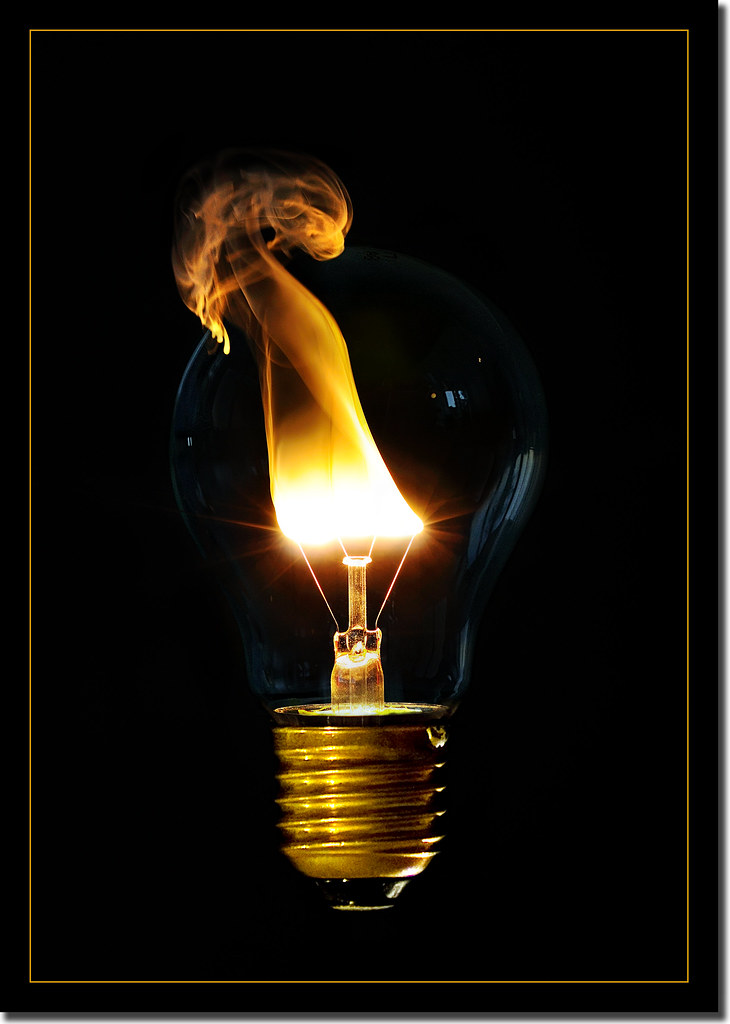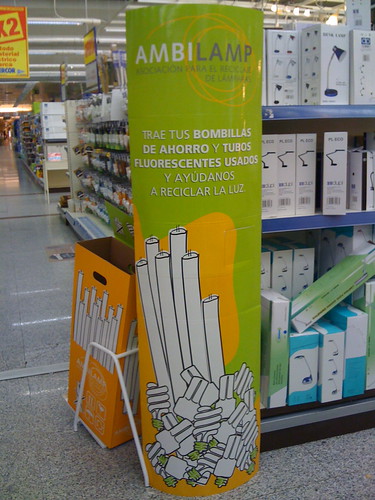
Photo credit _Beat_???
Well, the EU thinks it takes 27 countries to change the light bulb. And they may well be right.
Today the EU brings into force a ban on frosted and incandescant lightbulbs of 100W and over. This is the first part of a program to completely phase out incandescent light bulbs in the EU by 2012. According to the EU announcement, as a result of this
EU citizens will save close to 40 TWh (roughly the electrictity consumption of Romania, or of 11 million European households, or the equivalent of the yearly output of 10 power stations of 500 megawatts) and will lead to a reduction of about 15 million tons of CO2 emission per year.
However, this message doesn’t appear to be getting through to many of the EU citizens with many reports of people hoarding 100W lightbulbs across Europe.
Reasons for the hoarding are understandable. The light quality from CFL’s is not comparable to incandescents. CFLs lights are not dimmable. They are more expensive (at least as an initial outlay) and they need to be disposed of carefully as they contain small amounts of mercury. Fortunately our local Hipercor store has a special collection point for safe disposition and recycling of CFL’s. If your shop doesn’t, ask them why not!
However, on the positive side, what this ban does is it creates a large market of consumers (EU population is approx 500m people) hungry for good lighting solutions. This should act as a serious spur for innovation in the lighting space. The current alternatives to incandescent lights are CFL’s, Halogen lights and LEDs.
Of these, the CFLs have the limitations outlined above. Halogen bulbs have light quality equivalent to incandescents but they are not very energy efficient, saving at best 25-50% over incandescents (as compared to CFLs saving typically 75%) while still being expensive and LEDs are still quite an immature technology.
The LED light though holds the most promise. LEDs are mercury free, they are fully dimmable, their lifetime can be 50,000 to 60,000 hours (or about 10 times longer than an average CFL), there is no bulb or filament to break and they are extremely energy efficient. There are some barriers to their widespread adoption currently (they are expensive to produce and LEDs are quite directional) but the sudden appearance of a marketplace of 500m people will definitely act as an incentive to invest in overcoming these difficulties.
Thanks in no small part to today’s ban, in a few short years I expect we will all be using LEDs to light our homes and reducing our carbon footprint considerably in the process.
Related articles by Zemanta
- Big turn off (news.bbc.co.uk)
- Europe’s Ban on Old-Style Light Bulbs Begins (nytimes.com)
- Defra lacks power to ban our bulbs (telegraph.co.uk)
- EU bans old-fashioned light bulbs (news.bbc.co.uk)
- Frosted light bulbs to be banned by EU (telegraph.co.uk)
- Industry Looks to LED Bulbs for the Home (nytimes.com)


